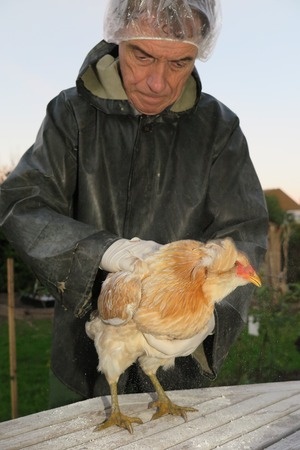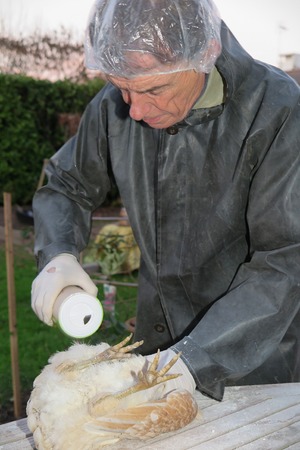
Protecting your flock from mites and lice can seem like an impossible problem. In fact, many poultry producers in years past didn’t even bother trying to get rid of mites, lice and similar pest infestations because it was such a common and invasive problem. Fortunately, there are now some easy things you can do to protect your flock from these parasites.
Where Do They Come From?
Parasites like lice and mites are often brought to chickens by wild birds outside of the farm. Taking steps to prevent wild birds from nesting in your chicken coop can help to reduce the introduction of parasites. Preventing the problem is always easier than managing it afterward.
Signs of Problems
How do you know if your flock is experiencing a parasite problem? Some of the telltale signs include seeing lice, mites or other parasites on chickens or around the chicken coop, of course. Since lice and mites live in moist environments, you should turn birds upside down and pull feathers away to inspect the vent area. If they have lice you’ll see them on the skin here. You may also see symptoms of anemia in your birds, like pale wattles or combs, chickens picking or scratching more than usual, humans being bitten by parasites, decreased egg production, broken or damaged feathers, and red patches on a chicken’s skin.
Treatments
Chicken lice can be identified by easily. These tiny insects feature long, narrow bodies, and feed on shedding skin cells while laying their eggs on the feathers. Issues with chicken lice can be treated easily with carbaryl dust, natural pyrethrum or permethrin. Be sure to pull all feathers that have egg clusters attached to them and burn them. Then, do a treatment 30 days later to break the cycle.
Chicken mites are also tiny insects, but feature rounded, dark bodies which are very hard to see. Some types of mites stay on the chicken all the time, while other types feed on the chicken at night and hide during the day. Permethrin is commonly used to treat chicken mites.
Free-range chickens will often find a sandy spot to wallow on their own, but consider providing confined chickens with a sandy area where they can take a dirt bath as well. Wallowing allows chickens to dislodge and smother parasites naturally. It also helps chickens to clean their bodies, which helps to further reduce the likelihood that parasites will be attracted to them. A mixture of sand, ash, dirt and some garden bug dusting powder makes for a good dirt bath to keep parasites away.
Parasites like mites and lice can cause problems for chickens. In young birds, these parasites can even cause death in some cases. Among mature birds, parasites may cause skin irritation, weight problems, reduced laying, feather damage and even anemia, leading to less effective and productive chickens.
Stay tuned for more updates from the Cackle Coop!




I put a drop of ivermectin plus, injectable, in my parakeets water bowl once a month and left the water in the cage for a day. The roundworms dropped right out of them. I use ivermectin plus on myself , family and all our four leggers every 28 days as a preventative to a broad spectrum of parasites including mites of all kinds. I dont see why it would not work for mites in poultry as well. Any farm supply store sells it. The product i use is marketed as Ivermectin Plus,injectable, for cattle, but i use it orally on all my babies. They sell it in different forms and sizes. 50 milliliters is about $40 but 1 milliliter, or cc, treats 110 lbs which is allot of bang for a buck. The safety measure on it is very large. Use discretion and a little sense to figure out how to tartrate the dosage for your needs. This kills skin parasites in a matter of minuets and also helps controll a wide range of internal parasites. Yo do need a syringe to pull the medication from the bottle and measure the dosage. They sell them wherever you go to get the wormer. Good luck and happy spring
I generally put diatimaceous earth in their sand box to help get rid of mites and other paracites
Sooooo helpfull!!! Mites are our worst enemy!!?